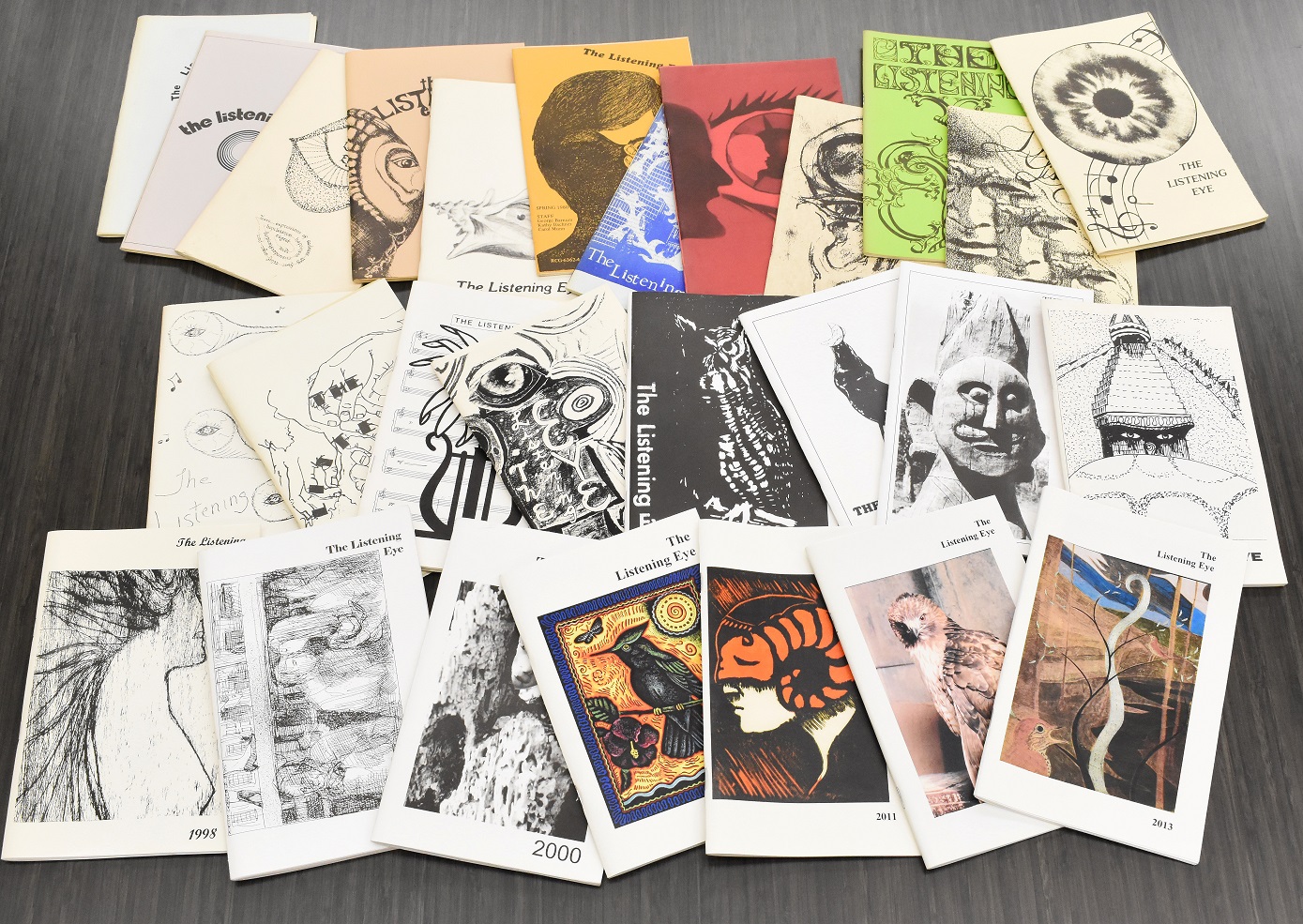The Listening Eye is reawakening. This literary magazine, published by Â鶹¾«Ñ¡ at Geauga, has produced a new edition of original poetry, short stories, essays, and artwork every year since 1970. In 2020, it paused for the first time in 50 years â as so many of us held our collective breath through the worst of COVID-19 â but a renaissance is on its way.
Itâs notable to recognize how rare it is for a small campus to publish a prestigious creative writing journal, says Bonnie J. Shaker, Ph.D., Assistant Professor of English at Â鶹¾«Ñ¡Geauga. The nearest comparison might be Kenyon Collegeâs , which is much bigger, better funded, older, and well-known.
Since April is National Poetry Month, this is a perfect time to celebrate poets and their craft, especially those who have persisted with excellence for five decades. Dr. Shaker, who recently became associate editor of The Listening Eye, says that the credit for its creation, status, and longevity falls squarely on the dedicated shoulders of Kent Geauga English Professor Emerita and Grace Butcher.
Professor Butcher, 87, began teaching English at Â鶹¾«Ñ¡Geauga in 1968. A longtime Chardon resident, she recalls, âThis was back in the hippie days, during a big upsurgence of poetry readings in local coffee houses. I was part of that scene in Cleveland and wanted to bring it here, so I started a monthly poetry workshop where students and people from the community would gather to read their poems, and then the audience would critique them. Since we were âsuper-cool,â we thought that having a poetry magazine on campus was also the thing to do.â
During the journalâs formative years, when it was a set of mimeographed pages stapled together, âI told my students that I would publish ANYTHING at that time,â Prof. Butcher recalls. The journal also went by the tongue-in-cheek title, The Â鶹¾«Ñ¡ Geauga Campus Literary Magazine & Pancake Breakfast and/or Spaghetti Dinner.
After just a couple of issues, the title proved to be understandably cumbersome, so a contest among the student body produced its lasting metaphoric title, The Listening Eye. Ever since, the journal has adopted a chapbook-style format, with cover artwork featuring an interpretation of a listening eye.
Over the next 20 years, the hippie era faded. Along with it, studentsâ interest in creative writing also lagged. âWe have had diminished student content from the student body for years and years since interest dwindled away in the â90s,â Prof. Butcher says.
In order to keep her passion project alive in the early 1990s, Prof. Butcher received permission from the Â鶹¾«Ñ¡Geauga dean to convert The Listening Eye into a national literary magazine, publishing poets, writers, and artists from across the country. Since Prof. Butcher had already established a national network of contacts through her poetry recitations plus collegiate workshops and conferences, she had no trouble attracting âsome real good namesâ to the publication.
As a result, The Listening Eye is listed in prestigious national directories and continues to attract quality submissions. Contests (with cash prizes) are held annually for the best cover art and the best sports poem (hearkening to Prof. Butcherâs background as a competitive runner, horsewoman, and motorcyclist). Prof. Butcher plus two assistants comprise a jury that determines which submissions are worthy of publication for that year.
As with many other COVID-related pauses, The Listening Eye now has an opportunity to reconsider its mission, function, and next steps. Since submissions intended for 2020 publication are still in process, the 2021 publication of The Listening Eye may be larger than the typical 48-50 pages. Local and student submissions are encouraged, along with the national pool of entries.
Moving forward, Dr. Shaker is generating student engagement through the campus Media Club in design, layout, and production of The Listening Eye, while Prof. Butcher focuses on reviewing submissions. Dr. Shaker is also pursuing sources of funding to ensure the journalâs perpetuity. Along with the enthusiastic support of Â鶹¾«Ñ¡Geauga Dean Angela Spalsbury, The Listening Eye can anticipate a revitalization that could propel it forward for another 50 years.
Admittedly âold-school,â Prof. Butcher holds an enduring aversion to digital technology. âI hate reading from a computer screen. We have stayed â lovingly â with paper for all of these years.â
Seeking entries that embody âthe opposite of cliché, predictable rhyme or trite images,â Prof. Butcher wants âto learn something I didnât know before, with language using vivid imagery that involves all five senses; not abstractions.â
She will accept email submissions at grace_butcher@msn.com but still prefers hard copy submissions mailed to The Listening Eye, 14111 Claridon-Troy Rd, Burton, OH 44021. Submissions can include a maximum of four poems, one 750-word piece of creative writing, and/or a copy of an original painting, drawing, or another piece of artwork that relates to the title of the literary magazine.
Look to the or for submission details, requirements, and deadlines.
